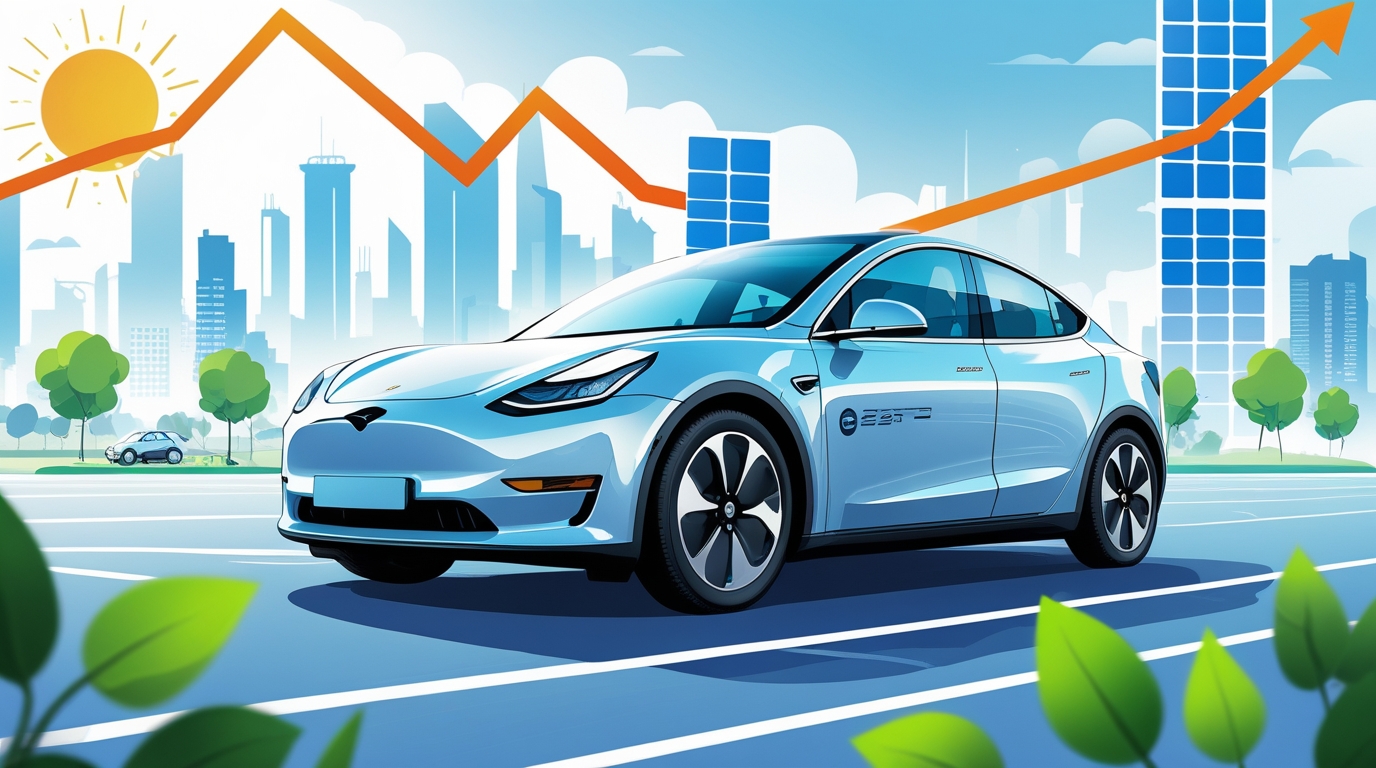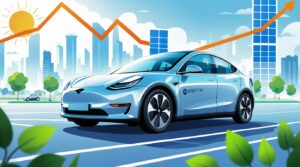
Thilini Gnanasena

The electric vehicle (EV) movement has progressed from a projection of the future to a reality. Governments want to promote electric cars for greener transport, manufacturers are investing in novel cars, and the public is beginning to view EVs as an intelligent alternative to fossil fuel vehicles. Most of the discussion still centers around new cars, which incorporate advanced technology, but there is another side of the debate that is slowly getting more attention: the used EV market.
Once people start purchasing and upgrading to new electric cars, their old models are automatically available for resale. This phenomenon is creating new opportunities for more customers to buy into electric mobility without paying a premium price. However, as with all developing markets, the used EV market has its own set of exciting opportunities and unique challenges.
Importance of The Used EV Market
The persistent affordability challenge that comes with the purchase of an electric car as compared with a conventional vehicle raises a barrier to mass adoption. A booming market for used EVs can remove that barrier. Used EVs allow for the adoption of sustainable driving practices from a broader demographic of consumers.
Aside from the barrier of affordability, the existence of a used EV market is a sign of maturity in the industry. It demonstrates how EVs have evolved from being a niche technology to becoming more common place. Probably, as second-hand markets helped in the adoption of smartphones in the past, used EVs have the potential to accelerate the adoption of electric mobility across diverse societies.
Factors Fuelling Growth in the Used EV Market
1. Accessible Pricing for the Average Consumer
The prospect of saving the planet is not the only motivation for every person who uses an EV. Used EVs being sold at competitive prices make the switch to electric vehicles more attainable for families and single consumers who may have been priced out by newer models.
2. Advancement of Sustainable Practices
Purchasing items secondhand is not simply a financially sound practice. It is also a sustainable practice. Extending useful life with EVs and their batteries saves on waste and conserves resources, further promoting the circular economy.
3. Advancement of Innovative Business Models
Increased demand for used EVs has spurred the growth of ancillary services. Dealerships and other companies are providing services such as battery health diagnostics, refurbishment bundles, and pre-owned certification. This network enhances consumer confidence and generates employment opportunities in the FOM sector.
4. First Step Towards Becoming an EV Owner
Many drivers experience their first electric vehicle in the form of a used EV. After spending some time with an electric vehicle, the ease of charging, quiet operation, and lower operational costs lure even veteran drivers to upgrade. This abundant supply of used EVs inspires confidence in the electric vehicle market.
The obstacles hindering the vehicle segment’s expansion
The used market for electric vehicles may seem simple; however, there are several issues pertaining to mental, social, and economic aspects.
1. Aging and Market Appeal
The most challenging aspect of an electric vehicle lies with the battery. Unlike traditional vehicles which one could assess the worth from the mileage, there is no clear measure with regards to the performance of a battery. A number of chargers, temperature, and maintenance all come into play. A layman with no knowledge of EVs will struggle to determine the depreciation of battery life.
2. Absence of Charging Stations
Owning an EV is easy, and provided it is affordable, the issue lies with the availability of charging stations. When there are none, it becomes an extremely challenging wake-up for people who are used to pushing their boundaries. That is, adjunct dangers like ‘range anxiety’ become behavior deterrents. Depreciation and Resale Value
Electric vehicles lose value in a more diverse and sometimes chaotic manner than gasoline cars. Government programs encouraging adoption of newer models alongside changes in technology may cause older electric vehicles to lose value faster than anticipated. Buyers appreciate the lowered costs, while sellers may not find them as favorable due to the lack of return on investment.
3.Building Trust in the Market
There are a number of approaches to this problem. Buyers are more confident about the performance and health of the batteries in vehicles offered as certified pre-owned electric cars.
As systems for battery management become progressively sophisticated, there is more and more systematic information that owners can access on the condition of their battery. This data may become an essential feature of resale transactions.
Looking Ahead: What Lies Ahead for the Used EV Market
The growth of the second-hand EV market is not just an aesthetic market that one would like to have—rather, it is a necessary consideration along the way toward the adoption of sustainable mobility. It is in resolving the issues of certification, the necessary infrastructure, and the problem of depreciation that the used EV market would be able to ride the next wave of sustainable mobility.
On the part of users, one would have the ability to practice sustainable practices of commuting at a much more affordable price. On the part of stakeholders, there would be the possibility of diversifying one’s business practices and contributing toward a sustainable eco-society. On the macro-level of society, this is one more step toward the desired eco-society for the globe.
The level and rate of growth of the used EV market demonstrates that the growing adoption of electric mobility is not just for the elite class and the technologically informed—rather, it is for every one of us. Though in this testimony, the authentic concerns of battery health and the necessary infrastructure certainly exist, the proposed benefits and the sustainable eco-society readily outweigh the concerns.
Future trend for the EV Vehicles; The future does not only exist in the newest models of EVs but also in the hands of second-hand car buyers, whose purchase and use of the electric vehicles would be an important step toward the next wave of the electric revolution.